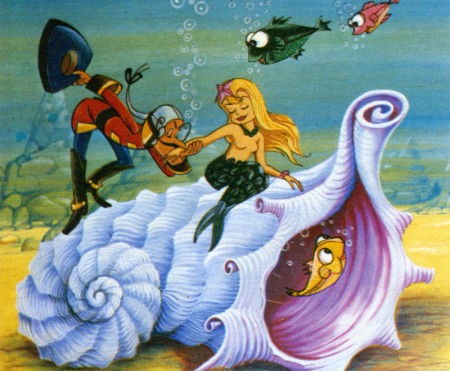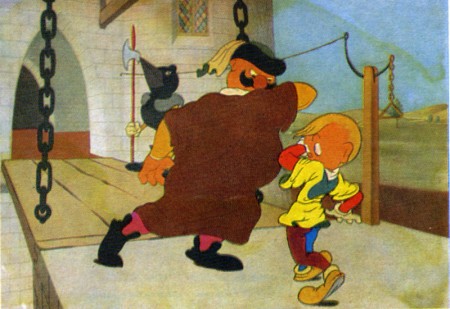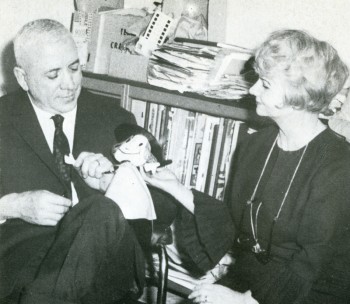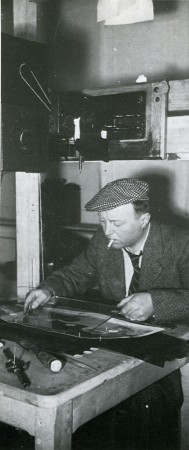Articles on Animation 28 Sep 2007 07:58 am
A Couple of Early French Animators
- In 1981 there was a gallery showing in France celebrating the 100 years of French animation. They focused on a number of celebrated names. I have a copy of the catalogue and thought it might be a good idea to translate a couple of the pages and feature a couple of these French masters. I hope to feature more in future posts. These two are the ones I’ve heard about my whole life. Halas made them both stars with his Technique of Film Animation.
Born in Hungary, Jean Image (pseudonym of lmre Hajdu) emigrated to France in 1932 and worked in advertising prior to World War II. He was located in the southern zone during the German occupation of France.
His first films included the shorts, Les Noirs Jouent et Gagnent (1944) and The Adventures of Monsieur Pinceau. His films opened in the unoccupied zones and moved onto Paris after the Liberation. The film Saturn Rhapsody (1946) was selected for the Cannes Film Festival.
Image became the most prolific French producer-director doing both animated short films and features. (Jeannot the Intrepid in 1950, Bonjour Paris in 1952, etc). He was one of the first in France to produce several series for television, such Joe and the Bees (1960-1962) and Kiri the Clown (1966-1969). He was unquestionably a popular figure. In his late films, he worked in collaboration with his wife, France Image, who wrote scripts.

The Adventures of Baron Munchausen
French animation still sought a style of its own when the company “Gemini” was established by André Sarrut and Paul Grimault in 1936.
Their first films reflect the original talent of Grimault combined with an organized production which was often lacking in France.
The team patiently trained animators around Grimault and led the industry thereafter and for many years. Artists such as Lacam, Allignet, Dubrisay, Dupont, Genestre, July, Landrot, Leroux, Mutschler, Ruiz, Vausseur, Watrin, etc, became the elite of French animation.
Grimault’s first film to receive International acclaim was Le Passagers de la Grande Ourse in 1942. (See my separate post about this film.)
Paul Grimault was the winner of the 1st Emile-Reynaud prize awarded in 1943 by film criticis for the body of his work. He was again awarded the Louis-Delluc prize for his full-length feature Le Roi et l’oiseau. Grimault had worked since 1945 to complete this film which was released by Sarrut in 1952 under the title, La Bergère et Le Ramoneur. This caused a great rift between Sarrut and Grimault. With his cohort and companion, Jacques Prévert, he was able to reclaim the film and complete the definitive version released in 1980.
In the interval, several short films were made under the of Grimault’s direction – Le Petit Soldat (1947), Voleur de Paratonnerres(1944), etc. – and more recently,
Le Diamant (1970), Le Chien Mélomane (1973) and La Table Tournante (1977).

Le Marchand de Notes


